#DNA double
Text
MITOSIS- its Occurrence, Stages and Significance.
Unlocking knowledge one post at a time! Check out our latest notes on www.microscopiaiwm.com – a treasure trove of insights, ideas, and inspiration. Dive in, explore, and let the journey of discovery begin! 📚
INTRODUCTION:
Mitosis is a type of cell division that takes place in living organisms and it is commonly defined as the process of duplication of chromosomes in eukaryotic cells and distributed during cell division.
The process where a single cell divides resulting in two identical cells, each resulted cell contains the same number of chromosomes and…
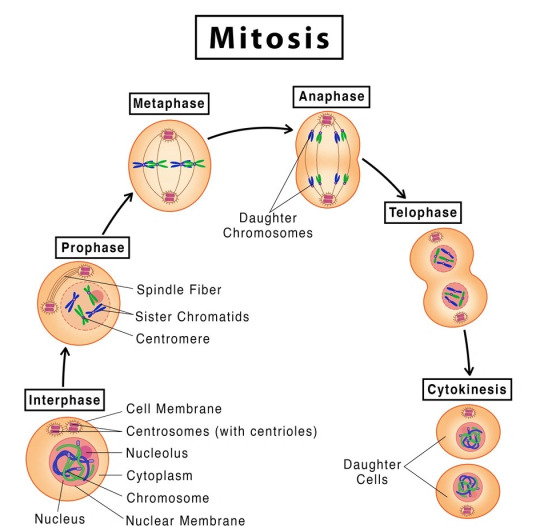
View On WordPress
#anaphase#asexual reproduction#cell cycle#cell cycle stages#cell division#cell plate#chromosome#cleavage furrow#contractile ring#cytokinesis#daughter cell#daughter cells#division of cytoplasm#division of nucleus#dna#DNA double#duplication of chromosome#fragmoplast#genetics#germ cells#homologous chromosome#homologous recombination#homologous recombination repair#karyokinesis#kinetochore#kinetoplast#meiosis#metaphase#MicroScopia IWM#mitos
3 notes
·
View notes
Text
It's kinda shocking to me how few people seem to know how prevalent the 'my great grandmother was cherokee' myth is and how it's almost never actually true, especially when it comes with things like 'never signed up' or 'fell off the trail' or 'courthouse burned down destorying the documentation' etc etc.
People just don't even seem to know the history like.. when the Trail happened. My great great great grandfather was 2 years old during Removal in 1838, so peoples 'my great grandmother hid in the mountains!' is so clearly wrong. And we have rolls. From before and after removal, rolls done by cherokee nation and others by the government, rolls that were not stored in one random flammable courthouse. It's not difficult to find the actual evidence of ancestry.
And just.. there are lots of ways those family stories get started. It was a practice during the confederacy to claim cherokee ancestry to show one's family had 'deep roots in the south' that they were there before the cherokee were removed. Many people pretended to be cherokee and applied for the Guion-Miller payout just to try to steal money meant for cherokees - 2/3rds of the applicants were denied for having 0 proof of actual cherokee ancestry. [We even see lawyers advertising signing up for the Miller roll just to try to get free money.] And the myth even started in some families in the cherokee land lotteries, where the land stolen from us was raffled off, including the house and everything that was left behind when the cherokees were removed. We have seen people whose families just take these things stolen from the cherokee family and adopt them into their own family story, saying that they were cherokee themselves.
If you had some family story about being cherokee and you wanna have proof one way or the other, check out this Facebook group run by expert cherokee genealogists that do research for free. Just please read the rules fully and respect the researchers. They run thousands of people's ancestries a year and their average is only around 0.7% of lines they run actually end up having true cherokee ancestry.
#and ive heard even dumber origins of the cherokee family myth#such as an ancestor having a silly sounding name so the descendents just go 'oh she mustve been an indian!!!'#i was one of the few people who had my ancestry done on the facebook and had genuine cherokee ancestry#[though i had found it before it was just really validating to get it double checked and i started finding cousins (:]#like. i was told once when i was a kid by my grandma that my dad had cherokee ancestry and i didnt believe her. its wild that so many peopl#will make it a Fixture of their identity [or even just smth they bring up ever] with Zero proof#at least for cherokees from what ive seen its usually considered really disrespectful to claim to have cherokee ancestry without#actually having the documentation [like ancestors on the rolls]#and no a dna test doesnt count. nor does 'my dad is Clearly not white!' or 'high cheekbones' or old family photos or anything#i had this discussion with someone recently whose dad had been calling himself 3/4 native but didnt know exactly what nation ???? hello?#and its like... sorry but ur dad is like. italian lol.#[and blood quantum is bullshit anyway im tired of the 'im 1/16 cherokee' comments its dumb#cherokee nation does not have a blood quantum requirement. its pointless bringing it up in the discussion of who is or isnt cherokee]#also mandatory disclaimer that im reconnecting. i didnt grow up connected to the culture of even knowing my ancestry#this is all from my looking into this stuff over the past year or so. i cant claim to be an authority over anything regarding this#this is p much all my repeating things ive heard said by people who know a lot more than i do haha#man. and this isnt even starting to get into the fake tribe stuff. the only legit cherokee groups are the 3 federally recognized bands#cherokee nation of oklahoma. united keetoowah band. and the eastern band of cherokee indians.#any others that are state recognized or not at all arent acknowledged as legitimate by any of the legit cherokee groups#anyway. my final message goodb.ye#cherokee#tsalagi
379 notes
·
View notes
Text
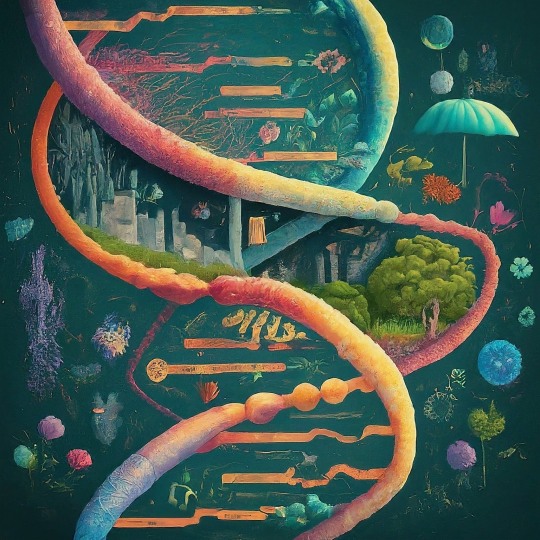
Epigenetics: A Journey Through Inheritance Beyond Genes
For centuries, scientists have been fascinated by the mysteries of heredity and how traits are passed down from generation to generation. DNA, the molecule that stores our genetic code, was once thought to be the sole determinant of our characteristics. However, a new frontier in biology, revealing a captivating layer of complexity beyond the DNA sequence itself: Epigenetics.
What is Epigenetics?
The term "epigenetics" was first coined in the 1940s by British biologist Conrad Waddington, but it wasn't until the late 20th century that its significance truly blossomed. Epigenetics, literally meaning "above genetics," refers to the study of heritable changes in gene expression that occur without alterations to the DNA sequence itself. Imagine DNA as the musical score, but epigenetics are the conductor and musicians who determine how the music is played. Through chemical modifications and adjustments to the proteins around DNA, epigenetics dictates which genes are turned on or off, influencing how cells function and ultimately shaping our health, development, and even behavior. Think of your DNA as the hardware: it contains the basic instructions for building and running your body. But epigenetics acts like the software, fine-tuning those instructions and determining which genes get turned on or off at specific times and in specific cells. These modifications, like chemical tags or changes in the packaging of DNA, don't alter the underlying code itself, but they can have a profound impact on how it's read and interpreted.
The Key Players:
DNA methylation: This process involves adding a methyl group to DNA, essentially silencing the gene it's attached to. Imagine it like putting a dimmer switch on a light bulb.
Histone modifications: Histones are proteins that package DNA, and changes in their structure can make genes more or less accessible to the cellular machinery needed for expression. Think of it like adjusting the curtains around a window - open wide for full light, slightly closed for filtered light.
Non-coding RNAs: These are molecules that don't code for proteins but can regulate gene expression in various ways. They're like the backstage crew in a play, ensuring everything runs smoothly.
The Power of Epigenetic Regulation
Epigenetic regulation plays a crucial role in various biological processes, including:
Development: During embryonic development, different cell types emerge from the same DNA blueprint by activating or silencing specific gene sets through epigenetic modifications.
Cellular differentiation: Specialized cells like muscle or nerve cells have unique functions due to differences in their active genes, controlled by epigenetic mechanisms.
Learning and memory: Epigenetic changes in brain cells are thought to be essential for learning and forming memories.
Aging: As we age, our epigenome accumulates changes that can contribute to age-related decline and disease.
Environmental influences: Diet, exercise, stress, and exposure to toxins can leave epigenetic marks on our genes, potentially impacting our health and even the health of future generations.
Epigenetics reminds us that we are not simply products of our genes. Our environment, choices, and experiences leave their mark, shaping who we are and potentially influencing our children's health. This deeper understanding of ourselves opens doors for self-awareness, empowerment, and potentially reshaping our narratives – not just as individuals, but as a species with the potential to leave a healthier legacy for generations to come.
#life science#biology#science sculpt#molecular biology#biotechnology#epigenetics#daily dose of science#dna#genetic inheritance#genetics#decoding dna#genetic code#science#double helix
104 notes
·
View notes
Photo
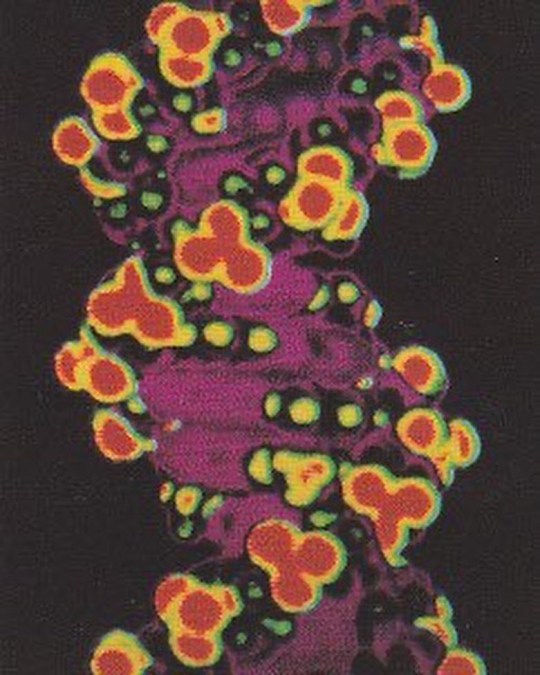
Ryan Mitchell
369 notes
·
View notes
Text
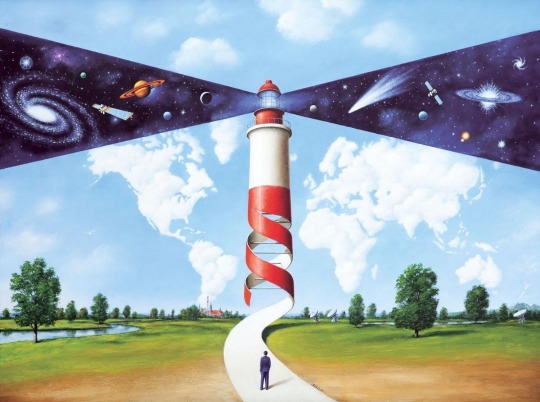
Rafał Olbiński
#Rafał Olbiński#art#surreal#space#cosmos#universe#stars#galaxy#trippy#lighthouse#dna#double helix#planets#comet#surrealism#surreal art#map#geography
118 notes
·
View notes
Text
will always be grateful to my tenth & eleventh grade history teacher for three things in particular:
(1) taught me how to write nonfiction by grading papers by mostly just writing “why?” every time i made an unsupported claim until i started doing it in my head to try to avoid it
(2) assigned us excerpts of susan douglas’s where the girls are in the 11th grade contemporary US history elective which basically introduced me to feminist pop culture analysis which basically set the course of my life
(3) taught our tenth grade US history survey in such a way that while i certainly didn’t retain every detail of everything we covered, i walked away from the year understanding that everything about the US makes sense if you remembered that the country was founded twice almost simultaneously, once as a slave society dedicated to the pursuit of profit and once as a theocracy for religious fundamentalists so hardcore that they kept splintering off into new theocracies
#if you hold on to jamestown and plymouth as the double helix of our DNA#like there is simply no mystery about why this place is Like That#everything i have learned about this country since fits into the framework he gave me
33 notes
·
View notes
Text

Aah yess the first sign showing that Wilson is also as crazy
35 notes
·
View notes
Text

Quick interruption: This may (somehow, still?) be a hot take, but I swear to all that is unholy and insane, I've been sitting on this salt about the TB and Kafka since like May of last year. This isn't going to be a long meta at all, but I do want to make something abundantly clear on this blog.
I know that people say the 'mommy' thing jokingly because they have the hots for her (listen, I understand the motivation, I just firmly hate the term), but I know some people actively still believe that Kafka is somehow related to the TB even if her story quest has since entirely debunked that claim and proved the opposite. Let me just, share this for a second:

(source) Can we put this to rest now, pretty please? I'm too old and too tired for this, guys.
#Before I post the reminder however#[ i also need to note that i think if any mother figure speaks to a child the way that she does to caelus and/or stelle-- ]#[ then i do think that there's something a little... odd going on there. it has many interesting “undertones” when she talks to them. ]#[ and looking at that dynamic with a familial lens has me feeling a little.. weird. ]#[ i just. i don't want to get weird surprises here! but also i didn't realize until i had to inform like a handful of people recently... ]#[ that this is /genuinely/ not a thing; guys? ]#[ the 'part of my dna' leak of forever ago was used for the /lie/ in her story quest. it is LITERALLY the lie. ]#[ and yes it has been thoroughly confirmed. i even was one of the people who double checked this. because... ]#[ you could do the '2+2' option in the second half that /verifies/ the first answer as the real answer. and i did that for this. ]#[ and others apparently have as well. people /wanted/ this confirmed or the opposite. and it's since been confirmed to have been a lie. ]#[ so they're not connected in any capacity through 'dna' or anything. ]#[ i just-- yes. i just wanted this out there. ]#[ for those who might not know. ]
8 notes
·
View notes
Text
tilly death do us part
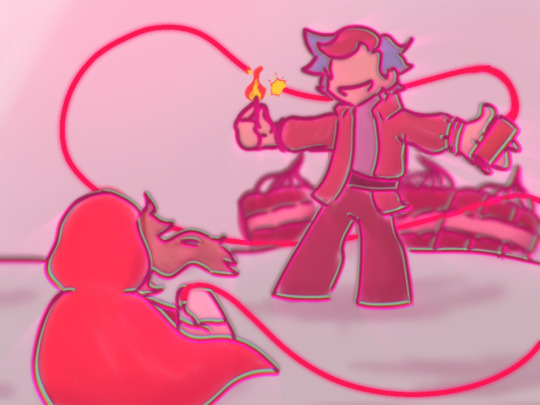
a doodle of double life pearl n scott for @skaterfc as a thank you for supporting my recent komaeda brainrot :]
#double life pearl#pearlescentmoon#double life smp#double life scott#double life smajor#scott smajor#smajor mcyt#pearlescentmoon fanart#dna doodles
110 notes
·
View notes
Note
we see u in ur dark n evil mind palace 👁️
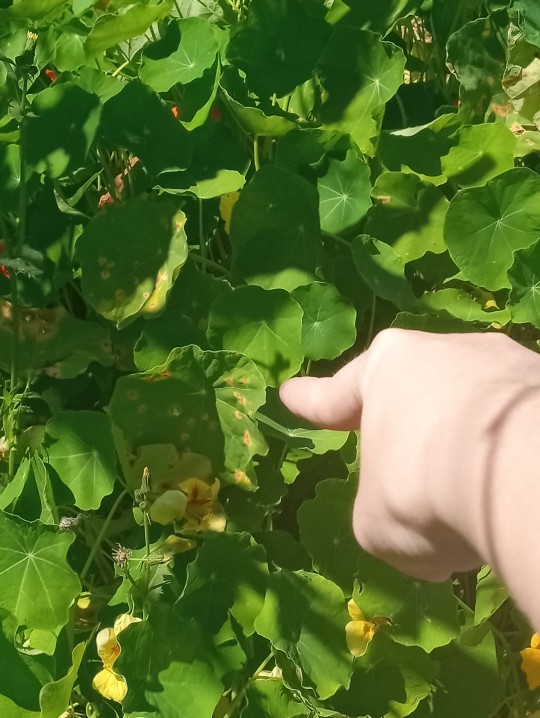

Shut up I’m literally trying to attend to my fucked up and twisted affairs man
#everybody thinks if you’re a little guy you can’t be evil#well I am SICK and TIRED of this stereotype#biting your ankles#DNA double felix-cipher#annie awakened#nice flowers I’m so jealous of your awesome sunny walk rn
5 notes
·
View notes
Text

Rosalind Franklin, chemist and DNA crystallographer.
Rosalind Franklin (1920-1958) has been called “the unsung hero of the double helix” after she failed to win recognition for her work in discovering the double-helix DNA.
Rosalind was born in London to a wealthy Jewish family. She studied chemistry at Cambridge University. She then went on to study the structures of carbon in coal, and later, viruses in plants and animals. In the 1940s, she studied plant viruses that blighted important agricultural crops, including the potato, turnip, tomato and pea. In 1957, she conducted research into the virus that causes polio.
In 1953, she made the most important discovery in her career. Using x-ray equipment and a micro-camera, Franklin photographed and analyzed samples of DNA. In May 1952, Franklin and a graduate student took a ground-breaking photo, labelled #51, which unequivocally provided the first clear image of DNA and its helical pattern.
Franklin’s research results had been passed to fellow scientists James Crick and Francis Watson without her knowledge or permission. Her photo, and her precise analysis of the x-ray diffraction data inspired Crick and Watson to reject their initial idea of a three-helix molecule and make the necessary calculations to develop the double helix model of the DNA strand we now know. Without Franklin, there likely would have been no global recognition for Watson and Crick and no Nobel Prize.
Crick and Watson were awarded the Nobel Prize in 1962. Franklin had already died of ovarian cancer in 1957 at the tragically young age of 37. When Crick and Watson were given their prize they not only did not acknowledge Franklin’s contribution to their work, they never even mentioned her name in any of their publications.
Franklin may not have been recognized during her lifetime, but years later, Watson and Crick did eventually acknowledge her contributions. In a book published in 1968, “The Double Helix” Watson wrote, “The instant I saw the picture my mouth fell open and my pulse began to race. The black cross of reflections which dominated the picture could only arise from a helical structure.”
There is now a Rosalind Franklin University of Medicine and Science in Chicago, which was originally founded in 1912 as the Chicago Hospital-College of Medicine, and was renamed after Franklin in 2004. Franklin has also become greater known among the general public, and was placed fifth in the 2018 BBC History Magazine poll of the world’s most influential women.
Finally, years after her death, Rosalind Franklin, whose work was instrumental in unlocking the structure of DNA, is receiving the recognition she deserved for so long.
Historical Photos of Women's Stories
83 notes
·
View notes
Text
Breeder who just had her 2nd ✨accidental✨ double merle litter: Anyway it's no big deal. The double merle bitch I kept from last time produced several conformation champions. She doesn't know she's completely deaf and partially blind with underdeveloped eyes and needs daily eye drops for the rest of her life, so her quality of life is not affected. There is nothing wrong with this picture.
#breeder who has been active for like 20 years: progesterone test said not viable so i just put her with a young male and left them#im not saying she DOES do it on purpose#but this is the 2nd time she puts a bitch in heat with a very young (9m this time) male for like a couple of minutes barely#and gets a double merle out of it#the first time she said there was a crisis and she just threw the male in a pen with the female#and this time she says she just went to get the other dogs out of the car#willing to BET she'll keep a puppy to breed#shes gotten very diligent in dna colour testing lately which is nice and all but yknow#if youre gonna turn around and go happy shruggie about doubles. why do you bother
63 notes
·
View notes
Text
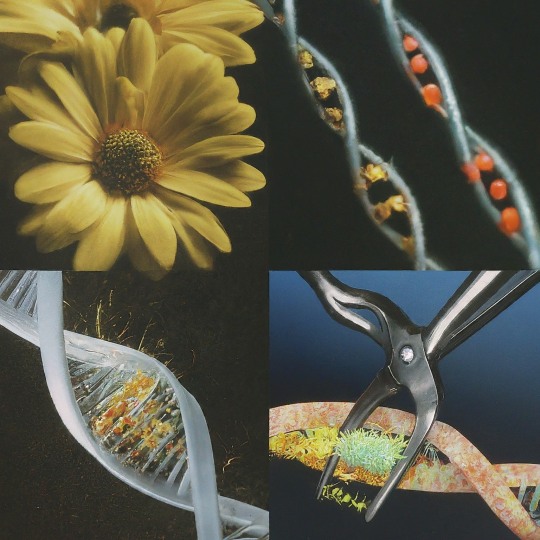
A snip, a splice : Power of rDNA Technology
Deoxyribonucleic acid (DNA), the blueprint of life, holds the secrets to the intricate workings of every living organism. But what if we could manipulate this blueprint, adding, removing, or tweaking its code? This revolutionary concept forms the core of recombinant DNA (rDNA) technology, a powerful tool that has transformed biology and medicine.
The story starts in the early 1970s with two brilliant scientists; Stanley Cohen at Stanford University and Herbert Boyer at the University of California, San Francisco. Cohen, a microbiologist, had been studying plasmids – small circular DNA molecules found in bacteria. Boyer, a biochemist, was an expert on restriction enzymes – molecular scissors that could cut DNA at specific sequences. Their collaboration proved groundbreaking. They envisioned combining these tools to create the first ever recombinant DNA molecule. Cohen provided the plasmids, which would act as vectors to carry foreign DNA into host cells. Boyer, on the other hand, used restriction enzymes to cut both the plasmid and the desired foreign DNA, allowing them to be pieced together. Through meticulous experimentation, they successfully created the first recombinant DNA molecule, forever altering the course of biology.
Cohen and Boyer's work wouldn't have been possible without the earlier discoveries of restriction enzymes. These "molecular scissors" were independently identified by three separate research groups in the 1960s. Werner Arber in Switzerland, along with Hamilton Smith and Daniel Nathans in the US, unraveled the role of restriction enzymes in bacterial defense mechanisms. These enzymes helped bacteria defend against invading viruses by cutting up their foreign DNA. Recognizing the potential of these "genetic scalpels," the groundwork was laid for their application in rDNA technology.
Here's a simplified breakdown of the rDNA process:
Isolation of DNA: The journey starts with isolating DNA from a donor organism.
Cleavage with Restriction Enzymes: Specific enzymes cut the DNA at defined sequences.
Selection of Vector: A carrier molecule (often a plasmid) is chosen to transport the recombinant DNA.
Ligation: The DNA fragments and vector are stitched together using DNA ligase, an enzyme.
Transformation: The recombinant DNA enters a host cell (usually bacteria or yeast).
Selection and Expression: The transformed cells are selected, and the gene of interest is expressed, leading to the desired protein production.
Since its inception, rDNA technology has played a pivotal role in several groundbreaking advancements. Let's take a whirlwind tour through some of the most significant moments in R-DNA history:
1978: Birth of Insulin on the Factory Floor: Scientists achieved a feat of genetic engineering by using R-DNA to produce human insulin in bacteria. This marked a turning point for diabetics, offering a readily available and more consistent source of this life-saving hormone.
1980s: Gene Wars and the Rise of GMOs: The 1980s saw the development of genetically modified organisms (GMOs). Plants were engineered with genes for insect resistance or herbicide tolerance, sparking debates about the safety and ethics of this technology. R-DNA research continues to be at the forefront of discussions regarding genetically modified foods.
1990s: The Human Genome Project Sets Sail: This ambitious international project aimed to sequence the entire human genome. R-DNA techniques played a crucial role in deciphering the 3 billion letters of our genetic code, opening doors for personalized medicine and a deeper understanding of human health and disease.
2000s: Gene Therapy Takes Center Stage: The first successful gene therapy trials for inherited diseases like severe combined immunodeficiency (SCID) took place. R-DNA technology offered a glimmer of hope for treating genetic disorders by introducing healthy genes to replace defective ones.
2010s and Beyond: CRISPR Takes Over: The emergence of CRISPR-Cas9, a revolutionary gene editing tool based on R-DNA principles, has ushered in a new era of genetic manipulation. With unprecedented precision, scientists can now edit genes in various organisms, holding immense potential for gene therapy, crop improvement, and even the eradication of diseases.
But with great power comes great responsibility, and R-DNA raises a host of ethical concerns.Tinkering with the building blocks of life carries the risk of unintended consequences. Engineered genes could escape and disrupt ecosystems, or modified organisms could have unforeseen health effects. The ability to edit human genes opens the door to designer babies, raising questions about social equity and the potential misuse of the technology for eugenics.
Who Controls the Tools? Access to R-DNA technology could be restricted to wealthy nations or corporations, exacerbating existing inequalities. Biosecurity is also a concern, as the technology could be misused for bioterrorism. Creating entirely new organisms forces us to confront what it means to be "natural." Should we modify plants and animals for human benefit, or preserve their original forms? R-DNA technology is a powerful tool, and we must have open discussions about its ethical implications. Scientists, policymakers, and the public all need to be involved in shaping the future of this technology. As we move forward, open dialogue and collaboration between scientists, policymakers, and the public are crucial to ensure the safe and ethical application of this powerful technology.
The journey of rDNA technology is a testament to human ingenuity and its potential to reshape our world. From decoding the secrets of life to creating solutions for healthcare, agriculture, and beyond, rDNA technology continues to evolve, promising a future filled with exciting possibilities.
#science sculpt#life science#science#molecular biology#biology#biotechnology#artists on tumblr#dna#double helix#genetics#recombinant#genetic engineering#insulin#research#education#learning#academics#scientific research#scientific illustration#medical science#scifi#daily dose of science#scientific advancements#scientific tools#medical school
7 notes
·
View notes
Text
For the most part, I've gotten fewer weird-ass answers from students on their worksheets as the semester goes on. And then this week, we had DNA and Inheritance, and there was a question about dominant traits and does dominant allele mean higher fitness- and let me tell you, that question's answers are a mess. Some I'm just staring at and going....there are a lot of words here that are completely wrong, do I give any points?
anyway the course coordinator is going to be getting feedback on that question tomorrow, it was worded poorly and we needed more slides to cover it more clearly. Some students did perfectly, but others are. uh. Didn't get the memo.
#it is so hard to anticipate what people are going to struggle with#there's a lot that is just basic common stuff to me and it is apparently not common knowledge#was never going to be able to anticipate people un-crossing the test tube tongs#and trying to remove hot test tubes from a water bath with the curved sides of the tongs pointed in#or people making a prediction about what extracted strawberry DNA would look like#and saying 'it will be a double helix'#y'all thought that you would be able to see the double helix with your bare eyes?
16 notes
·
View notes
Text
"It's beautiful," Crick breathes, erect and standing while admiring the erect and standing model of double-helix DNA, all bases correctly paired as the metal pieces spin a frozen tower heavenward, reaching.
Reaching like humanity grasping for God, but now they've finally reached divinity. Once a project of babel, now solved.
Finally, it's complete.
"Crick," says Watson in that quick way of his, chewing at nothing. "Your crick, is, well, cricked. Your wank is cranked."
"Watson, you. God's sake for the last time stop looking at my penis"

#race to the double helix#james watson#francis crick#dna#writing#this is what happened#to me#jeff goldblum
6 notes
·
View notes
Text
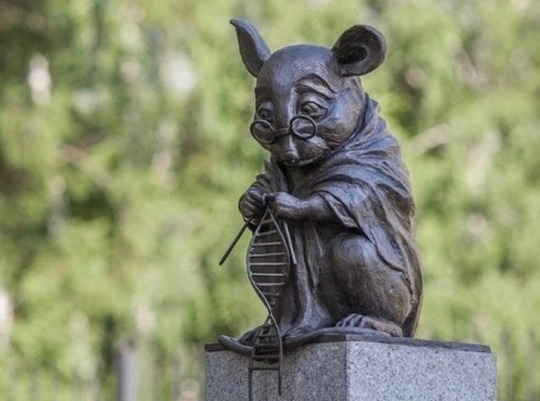
A bronze statue of a laboratory mouse knitting a double helix of DNA in order to honor all the mice that were sacrificed for genetic research to develop new drugs to fight diseases.
It was designed by Andrew Kharkevich and is located in Siberia, Russia.
The monument was completed on 1 July 2013, coinciding with the 120th anniversary of the founding of the city.
The monument commemorates the sacrifice of the mice in genetic research used to understand biological and physiological mechanisms for developing new drugs and curing diseases.
Sculptor Alexei Agrikolyansky, who created the statue, confessed that it was challenging to capture this moment, as the mouse was obviously not human.
Nevertheless, he had to produce a character with believable emotions while maintaining anatomical proportions, avoiding it looking like a cartoon character or a real mouse.
The DNA spiral emerging from the knitting needles winds to the left, symbolizing the still poorly understood Z-DNA - representing the scientific research that is yet to be done.
In contrast, the more common B-DNA winds to the right.
The very first photograph of DNA was captured by a woman named Rosalind Franklin (25 July 1920 – 16 April 1958) using X-ray technology, allowing James Dewey Watson (born April 6, 1928) and Francis Harry Compton Crick OM FRS (8 June 1916 – 28 July 2004) to accurately characterize the double helix.
While they went on to win the Nobel Prize in Physiology or Medicine in 1962, Franklin was not credited.
Sadly, she had passed away in 1958 from ovarian cancer, most likely caused by the high radiation exposure she endured while working with X-rays to capture the image of the double helix.
🤎🤍🤎
#DNA#mice#genetic research#Andrew Kharkevich#Alexei Agrikolyansky#scientific research#Z-DNA#B-DNA#Rosalind Franklin#James Dewey Watson#Francis Harry Compton Crick#double helix#Nobel Prize#science#Nobel Prize in Physiology or Medicine#laboratory mouse
14 notes
·
View notes